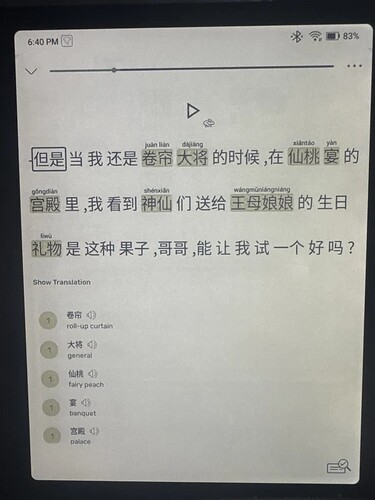I have used Lingq for three years and continue to use it daily. I use Readlang a lot too.
Lingq provides the following features I don’t want to part with:
- Transcribing audio when desired
- Playlists of audio downloaded to my iPhone (my no. 1 use for Lingq) that I can listen to anytime anywhere with or without an internet connection
- A visual summary of words in any lesson added to any one of my lesson queues showing counts for words marked as “currently learning” (aka “lingq’d”) and unknown (words I have yet to mark as learned or currently learning)
Love using Readlang for reading
Why use Readlang? I like the reading environment better when I’m on my desktop computer in a browser. And I LOVE just perusing the web and finding interesting things to read using Readlang to go anywhere I happen to go.
And sometimes I just prefer to study my own uploaded texts in the Readlang environment.
Reading lessons on my iPhone: Lingq
If I really do want to read the transcript of some text in Lingq, I usually do so on my phone. The phone app is quite good - much better than the browser version.
Creating and managing lessons: advantage Lingq
Managing a lot of lessons, organizing them into “courses” (by author, theme, or whatever) is robust, easy, and useful in Lingq - not so much with Readlang per my experience so far.
Lingq Miscellaneous
-
Lingq also will translate an entire lesson, and there are utilities for managing and downloading lessons available from third parties.
-
Lingq has a huge library of built-in lessons for many languages, certainly my target language: Russian
-
Lingq provides fast and efficient ways to import content to create lessons.
Creating your own lessons
The huge advantage of creating my own lessons is I can pursue my own interests. This helps me stay passionate about my language learning.
